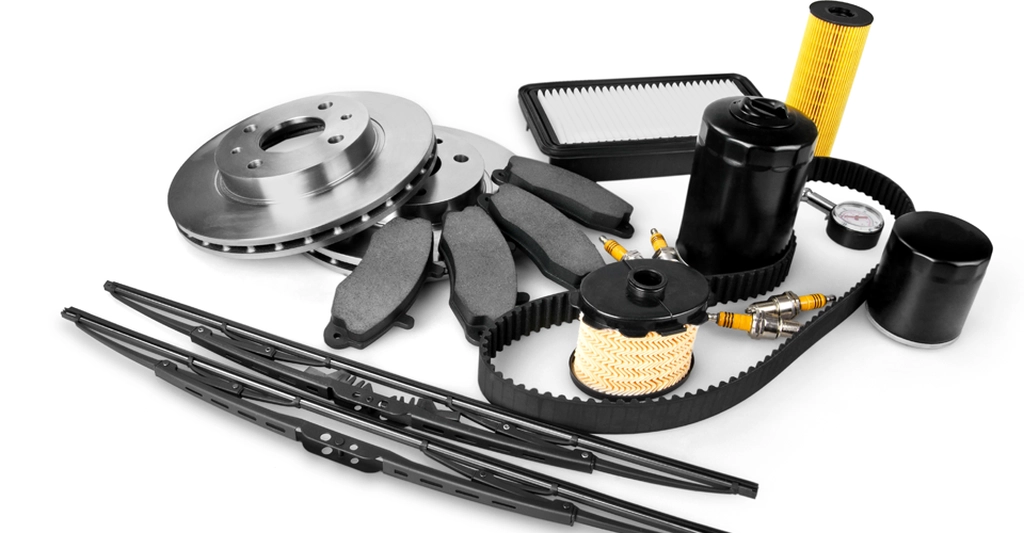When it comes to repairing your vehicle, the choices can be overwhelming. From hundreds of online retailers to dozens of parts suppliers, you’ll encounter terms like OEM, aftermarket, and OEM-approved. At first glance, it might seem like all parts are created equal. But if you’ve ever been stuck with a part that didn’t fit or failed too soon, you’ll know that’s not the case.
In this guide, we’ll break down what OEM parts really are, how they differ from aftermarket alternatives, and why they can make a significant difference in your car’s performance, reliability, and long-term value.
What Does OEM Mean?
OEM stands for Original Equipment Manufacturer. These are the parts made by the same company (or supplier) that produced your car’s original components when it rolled off the assembly line.
For example:
- Bosch supplies fuel injectors to several European automakers
- Denso produces spark plugs and sensors for many Japanese vehicles
- ACDelco, a General Motors subsidiary, supplies parts directly for GM cars
When your vehicle is serviced at a dealership, they will almost always use OEM parts. These components are built to the carmaker’s specifications, ensuring they fit precisely and perform consistently.
Benefits of Choosing OEM Parts
Perfect Fit and Function
OEM parts are designed specifically for your make and model. That means no guessing, no modifications, and fewer installation headaches. They align perfectly with your vehicle’s systems, which reduces the chances of failure or compatibility issues.
Reliable Quality
While some high-end aftermarket brands can match or exceed OEM standards, OEM parts are consistently manufactured to meet the automaker’s quality benchmarks. This means less variability and more peace of mind.
Backed by a Warranty
Most OEM parts come with a manufacturer-backed warranty, often lasting up to one year. This coverage can be especially valuable when you’re dealing with expensive repairs or engine-related components.
Downsides of OEM Parts
OEM parts tend to be more expensive than their aftermarket counterparts. But the extra price often reflects higher durability and precision engineering.
Some OEM components are only available through dealerships or specific online suppliers. This can mean longer wait times, especially for rare or imported vehicles.
What Are Aftermarket Parts?
Aftermarket parts are made by third-party companies rather than the vehicle’s original manufacturer. These parts are designed to fit and function similarly to OEM components, but the quality and specifications can vary widely.
Some aftermarket brands, such as Bilstein, NGK, or Bosch, are actually suppliers for OEM parts. Others focus purely on cost-effective production, which can lead to questionable durability and performance.
Pros of Aftermarket Parts
More Affordable
If you’re on a budget, aftermarket parts can offer significant savings especially for older vehicles or non-critical repairs.
Greater Availability
Aftermarket parts are widely available at local auto parts stores and online retailers, often with fast delivery options.
More Variety
In some cases, aftermarket manufacturers offer improved versions of OEM designs, such as performance upgrades or enhanced materials.
Cons of Aftermarket Parts
There’s a wide spectrum some aftermarket parts are excellent, others are subpar. Without proper research, it’s easy to end up with a component that wears out quickly or doesn’t fit correctly.
Unlike OEM parts, not every aftermarket part is built to exact specifications. This can result in extra labour or even damage if a poorly fitting part is forced into place.
Some brands offer extended warranties, while others offer none at all.
What About “OEM-Approved” Parts?
Some aftermarket brands market themselves as “OEM-approved” or “OE-equivalent.” This means they manufacture parts that meet or claim to meet the same standards as the original part. In many cases, these are high-quality alternatives that offer the same reliability at a better price.
If you’re working with an independent repair shop, don’t hesitate to ask about the parts they’re using. A reputable technician will often opt for trusted aftermarket brands that they’ve had success with over time.
When Should You Choose OEM Over Aftermarket?
- For critical engine, brake, or electrical components
- When your car is under warranty or has extended coverage
- If precision fit and long-term reliability are top priorities
- If you’re maintaining a luxury or high-performance vehicle
Practical Tips for Choosing the Right Parts
- Check your owner’s manual or service history to know what parts were originally installed.
- Ask your mechanic for the brand name and specifications of any replacement parts.
- Avoid the cheapest option if a deal seems too good to be true, it usually is.
- Research parts brands and look for those with proven reputations in the industry.
- Consider the cost of labour a failed cheap part that needs replacing again can cost you more in the long run.
Final Thoughts: Don’t Cut Corners on Car Parts
Your car is more than just a machine it’s part of your daily life, your family routine, and even your safety. While aftermarket parts can offer savings, not all are created equal. For essential repairs and components, sticking with OEM or OEM-approved parts is a smart, long-term investment.
At MotorHub, we believe in doing the job right the first time. Whether you’re replacing brake pads, spark plugs, or engine sensors, our partner workshops use only reliable OEM or high-quality OEM-approved parts. That way, you enjoy peace of mind with every drive.
Looking for trustworthy repairs using the right parts?
Book your next service with MotorHub and let certified technicians handle your car with care using only the components your vehicle truly deserves.
MotorHub services are also available across the UAE through our trusted partner workshops, ensuring access to quality parts and expert repairs no matter where you’re located.



